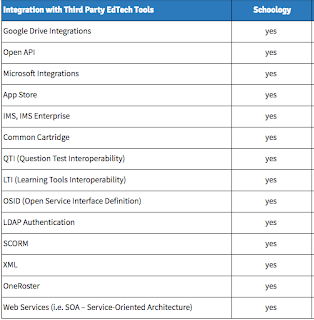Virtual
learning has been around for years and continues to make headway. I have
completed several online classes and have a clear understanding of how distance
learning works. As an elementary/middle school educator, I have heard about
ACCESS (of course from some of the high school teachers within my district),
but I did not have a clear understanding of exactly what it is and how it
works. As I read the chapter and completed my research for module 3, I learned
several things about virtual learning, especially ACCESS and Edgenuity. I will
highlight a few.
The
first thing that I learned was that students decide to take virtual classes for
other reasons outside of AP credit. Some of those reasons consist of having the
flexibility to leave school early for work, other extenuating circumstances,
and just the opportunity to take classes that would not have been available to
you within the school building. According to Morgan (2016), “Virtual schools
also help students take classes they would otherwise miss due to extenuating
circumstances. Roblyer (2006) discusses several examples of students
desperately needing an online program to graduate” (pg. 74).
Proponents by Lisa Lavender
Secondly,
I learned that there are states that allow students to complete an online
course for a fee; however, they will not provide the grade for the student. The
numerical grade must come from the students’ school system. For example, GeorgiaVirtual School (GAVS) and Florida Virtual School (FLVS) will allow students from
outside of their state to complete an online course. The last thing that I
learned was that students who are incarcerated can complete online courses to
receive their diploma and/or continue their education.
Virtual
learning has many benefits; however, there are a couple of things I find
concerning. As I completed my research, I could not find any clear data that
shows the effectiveness of virtual learning as it relates to student
performance. Morgan (2016) states, “Critics object to the rapid growth of
online programs in K–12 settings because of insufficient evidence about its
effectiveness” (pg. 74). Another area of
concern is the effect virtual learning has on students with disabilities. Many students
with disabilities need the social aspect that comes with the traditional
face-to-face classroom. I am confident that improvements and consistent
evaluations are coming. Simonson, Smaldino, & Zvacek (2015) states, “As
distance education in the United States increases in importance, evaluation
will continue to be a critical component of the process of improvement” (pg.
318). I really like the Kirkpatrick and Kirkpatrick’s evaluation approach because
it focuses more on the student (Learning, transfer and results). When taking a
close look at levels 2-4, instructors should be able to see what adjustments
need to be done to make sure the conditions for learning are present within the
virtual classroom.
Overall,
I have gained a lot from this module, but I still have a question about how a teacher’s
schedule looks when he/she teaches a traditional and virtual class. How does
the planning time look for them?
References
Morgan,
H. (2016). Online instruction and virtual schools for middle and high school students:
Twenty-first -century fads or progressive teaching methods for today’s pupils? Clearing
House, 88(2), 72-76.
Simonson,
M., Smaldino, S., & Zvacek, S. (2015). Teaching and learning at a
distance: Foundations of distance education (6th ed.). Charlotte, NC:
Information Age Publishing, Inc.
[Yvette
Sands]. [2019, Mar 3]. Online education students with disabilities [Video
File]. Retrieved from https://www.youtube.com/watch?v=vyx3Fwl6BEA.

